Despite a long-benign market, regulators appear determined to push through controversial reforms of professional indemnity insurance. Premiums are unlikely to fall but clients and solicitors will be exposed to grievous new risks, hears the Gazette’s latest roundtable.
ON THE TABLE:
Eduardo Reyes Law Society Gazette, Ruth Lawrence Forum of Insurance Lawyers, Keoghs, Colin Taylor JLT, William Glassey Mayer Brown, John Wooldridge Howden, Simon Thomson The Law Society, Brian Boehmer Lockton UK, Patrick Bullen-Smith Hera Indemnity, Catherine Shuttleworth Kennedys.
Solicitors have less than a month to respond to a radical blueprint for reform of the client redress regime.
Back in 2014, oversight regulator the Legal Services Board threw out proposals that included cutting the minimum level of professional indemnity insurance cover to £500,000 from £2m (£3m for incorporated firms and LLPs). But the Solicitors Regulation Authority was undeterred, returning to the table in March with a controversial reboot that prompted the Law Society to bemoan the ‘demolition’ of client protections.
Armed with a decade’s worth of data, SRA chief executive Paul Philip contended that the current ‘one-size-fits-all’ arrangements are too rigid. The revised plans will help firms – particularly smaller ones – ensure they are not paying more than necessary to protect themselves and clients, he insisted.
Again the plan is to cut minimum cover to £500,000, but with firms doing conveyancing work needing £1m minimum cover for each claim. The SRA says more than half of firms take out more than the minimum cover presently required and that 98% of PII claims against law firms are valued at less than £500,000.
The SRA plans to maintain a six-year run-off period for firms closing down, with a £3m cap for those needing conveyancing services cover and £1.5m for other firms. This is intended to make it easier for firms to close properly and reduce the risk that solicitors delay retirement unnecessarily.
Among those unconvinced by the SRA’s revised plans are participants at the Gazette’s latest roundtable on professional indemnity insurance. Solicitors face a triple-whammy, they fear – premiums will not be significantly reduced, clients will be exposed to new risks and the profession’s reputation will suffer serious damage.
‘In two or three years’ time there will be an absolute tsunami of uninsured or under-insured claims hitting the press,’ predicts John Wooldridge of brokers Howden. ‘These will have a devastating impact on how solicitors are perceived in the community. The Daily Mail will love it, won’t they?’
According to Hera Indemnity’s Patrick Bullen-Smith, the SRA has merely replaced one arbitrary figure (£2m) with another (£500,000).
And what of the regulator’s comprehensive evidence base? ‘The dataset begins in 2004, when the average house price in London was £219,000,’ points out Simon Thomson, the Law Society’s PII policy adviser. ‘It’s now £486,000. If you’re not factoring that sort of thing into your calculations, you cannot claim you have a good evidence base.’
Broker Lockton UK’s Brian Boehmer also questions the age of the data: ‘Negligence claims are negligence claims, but today we have cyber-related incidents and “Friday afternoon fraud”. They weren’t really prevalent in 2004 but they are now. So the dataset the SRA is using doesn’t necessarily contain all the facts.’
Even if the central data point regarding the value of claims is correct, agrees William Glassey, a professional liability specialist at Mayer Brown, this is hardly a clinching argument. ‘If it’s right that the vast bulk of claims come within £500,000 or £1m, why does that lead to the conclusion that the minimum level of cover should also reduce to £500,000 or £1m? It’s a non-sequitur, is it not, because then by definition you’re not going to get a premium saving.’
Wooldridge voices a consensus view that premiums will not change much, if at all. He says: ‘Any actuary looking at the claims statistics will come back and say, “all your losses are going to be in the first £500,000”. When you allocate the premiums involved, it is all going to sit down the bottom.’
Nor is the example of other professions especially instructive, argues Ruth Lawrence, a partner at Keoghs and vice-president of the Forum of Insurance Lawyers. ‘Protection of the public is a key issue and I know they have looked at different examples,’ she comments. ‘Architects or surveyors only require a minimum of £250,000 or £500,000, but their buyers can be quite different. Members of the public who buy legal services will often not be as sophisticated.
‘Healthcare professionals have unlimited cover. While I am not suggesting that lawyers and doctors are the same, there are clearly distinctions between different professions. I don’t think it is helpful to say, “if a surveyor needs £250,000 of cover, why does a lawyer need so much more?”’
Boehmer agrees, but goes further: ‘The SRA is losing sight of what its core focus needs to be, which is to protect the interests of the general public. What about the confusion that will ensue in the selection of legal services? Someone will have a certain amount of cover, someone else will have a different amount. Not everyone is going to read about [PII] in the small print.
‘Why is the SRA even doing this?’
That question is one the Gazette hears a great deal. We heard it very recently, in fact, when the regulator bypassed its own restrictions to allow an unregulated HR consultancy to offer legal services from in-house solicitors. What protections will there be for clients of solicitors in unregulated firms, particularly over indemnity insurance requirements? A question for another day, perhaps, but that day is looming.
‘Ad hoc’ regulation?
News that the Solicitors Regulation Authority had given the go-ahead for an unregulated business to start employing solicitors to advise its clients was met with alarm by the Law Society earlier this month.
If a solicitor works in an unregulated, profit-making entity, their clients cannot rely on a regulated guarantee of robust professional indemnity insurance, access to the solicitors’ compensation fund, or legal professional privilege.
‘It benefits nobody if regulatory change is introduced piecemeal and without proper scrutiny. Regulation exists to protect consumers, providing consistency and certainty. It preserves the strong global reputation of our legal system,’ Chancery Lane said.
A second unregulated entity – Rocket Lawyer – has been handed a similar waiver, fuelling fears over what the Society has dubbed ‘ad hoc regulation’.
Whatever the market blockage is that the regulator seems determined to clear, it does not seem to be one of supply. The PII market remains benign and there is plenty of good A-rated capacity in what Wooldridge describes as a ‘buyer’s market’. Moreover, the much-publicised carnage caused by unrated insurers exiting the market is a receding memory.
‘I think the lenders really made a big difference there,’ says Bullen-Smith. ‘When they turned around and said we won’t accept you on to our panels if you’re insured with an unrated provider, that killed the unrated sector almost overnight.’
There are caveats, however. ‘The market is still benign,’ Bullen-Smith adds. ‘But I think insurers want to write good risks and price is almost irrelevant for a good risk, if that makes sense. For firms that have got bad track records, insurers are less likely to say “we’ll write it into the premium” and more likely to say “we won’t write it”. But for good firms the market is as soft as it’s ever been, which makes you wonder why we’re willing to exchange it.’
Boehmer broadly agrees but points to a tightening: ‘In the first excess layer we’re seeing increases across the market with a number of carriers – Channel, Novae, and Brit which was the largest provider – all exiting the class. So while there may be modest savings in the primary premium, those will be eroded by rises in the excess layer premiums.’
Colin Taylor, a partner at broker JLT Specialty, detects a degree of ‘sabre-rattling’ from insurers about rates, notwithstanding the general air of calm. ‘We’ve been around long enough to know that most insurers will want rate increases,’ he says. ‘But when faced with losing some of their more desirable clients to others, that seems to cap the aspiration.
‘The noise about rates is just starting to happen. I wouldn’t say it’s yet translating into people paying more, it’s just something to be aware of.’
And pricing continues to matter: ‘For smaller firms it’s still massive because it’s such a large portion of their turnover.’
What does not seem to be disputed by anyone is that the abolition of the single (1 October) renewal date has been beneficial.
‘You’ve now got less stressed insurers making more informed decisions,’ observes Wooldridge. ‘People have got more time, which makes it more difficult for the dregs of the profession to get washed in on the tide, like they did before.’
Bullen-Smith concurs: ‘It definitely works. The fear also was that there would be less competition, but that hasn’t happened.’ The consensus at the table is that between a third and a half of all firms have moved away from the traditional renewal date, with up to 80% of practices renewing on 1 October or 1 April (reflecting the popularity of 18-month policies).
So how is the claims environment changing?
Conveyancing is perceived to be high-risk of course, with some insurers imposing thresholds in this sector beyond which they will not venture. Last week’s Dreamvar judgment seems to have muddied the waters further, while avoiding the doomsday scenario many had feared (see news).
Claims records are also important, notes Bullen-Smith: ‘It’s the firms who have systemic claims every year, four or five paying £30,000. That’s almost impossible to insure. And why wouldn’t it be? Why should they have insurance when they haven’t changed?’
Boehmer adds: ‘I think the most difficult risks to place are those where [the firm] “dabbles”. So only a small part of its work emanates from one area of law but this accounts for a large number of claims. Insurers are looking for more specialists, but there are many areas of law and you can’t be a specialist in them all. So limiting the areas of law that a practice undertakes is probably what insurers look for.’
JLT’s Taylor responds: ‘It rather depends, the other element being the frequency and severity of issues. There are some very large claims out there in the market at the moment that go into the very high millions. I think we’d agree that a one-off large claim is somewhat easier to deal with after the event and get back to normality, than a series of claims that keep coming and which just suggests sloppy systems or behaviour.’
Mayer Brown’s Glassey says: ‘If I were to try and identify a trend over the last few years, it would be litigation-related claims. Claims against law firms which are effectively becoming engaged in their clients’ business in one way or another, whether it be through a CFA, ATE, DBA or some other arrangement. They are certainly more prevalent now.’
Issues relating to retainers are identified as a growing trend by FOIL’s Lawrence: ‘Not knowing who your clients are, not being clear about what you’re being retained to do and the limits. Overstepping the mark and finding yourself in territory where you’re advising on issues you didn’t expect to be advising upon, and being sued as a consequence. I see a lot of that.’
Catherine Shuttleworth, Kennedys partner and indemnity specialist, urges the group not to overlook the people factor: ‘Very busy, time-poor individuals come under intense pressure with large sums of money. I hear that people are the greatest asset of a law firm but they are also the greatest threat.’
Better training is imperative here, she believes: ‘The SRA got rid of [compulsory CPD] and every year they come out with their Risk Outlook, analysing the biggest risks facing the profession. Why not invest money in trying to prevent some of these situations occurring with some really rigorous training for the profession as a whole? Cybercrime, for example – a lot of people don’t understand what they are doing when they “click”, and they aren’t always juniors.’
In the present environment, more than one attendee notes, there is a broader consideration to be taken into account at the smaller end of the market than a firm’s attitude to (and management of) risk. Wooldridge makes the point bluntly: ‘What do I think is the biggest threat facing this sector of the profession? Frankly, the continuous carpet bombing they are getting from [new regulations]. The constant challenge in time and money of defending themselves from this barrage.’
A pertinent example is the looming General Data Protection Regulation, which takes effect on Friday. Society data protection experts joined a senior figure from the Information Commissioner’s Office last month in warning firms not to expect or to rely on boilerplate policies for complying with the GDPR. There are no pat answers, in short.
‘It certainly raises questions about the length of file retention, good old-fashioned off-site storage or whether now it’s all in the cloud,’ says Taylor. ‘What does it mean? What can we destroy? Do we have to destroy it and how will insurers respond to that if we’ve no longer got a file?’
Lawrence adds: ‘Law firms will have personal data, medical records and so on, which could be quite high-profile in the GDPR environment. It’s how they look after it and, from a professional point of view, getting the message across that perhaps they need to look after it better than they have in the past.
‘At many law firms, people will be carrying client files around and there will be a lot of data that goes outside offices that don’t have clear-desk policies.’
‘I completely agree,’ says Glassey. ‘Even for well-run firms, this significantly changes the way they need to run themselves. As far as we and the law firms we work with are concerned, the biggest challenge is not actually civil liability risk or regulatory risk. It is the cost of compliance with GDPR, which is huge.’
All of which is made still more difficult, observes Boehmer, by competing with unregulated providers in so many areas.
‘Absolutely, all of the time,’ Wooldridge agrees. ‘As a broker and buyer of legal services myself, all of this will affect whether I go to the small, two-person firm on the high street or a much larger organisation. I just feel sorry for them.’
This roundtable was kindly sponsored by Howden UK, Hera Indemnity Ltd, JLT Specialty and Lockton

























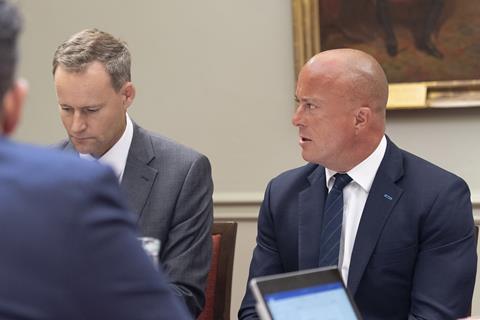

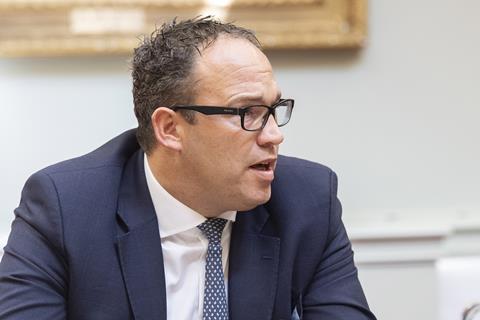
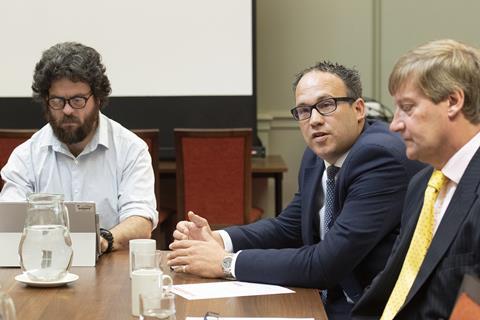
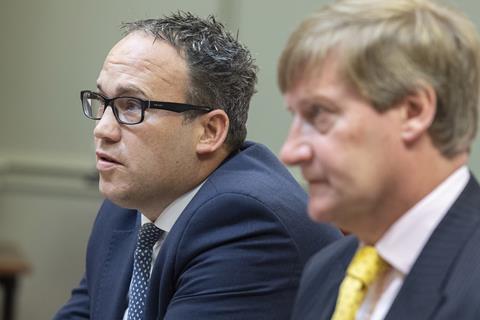



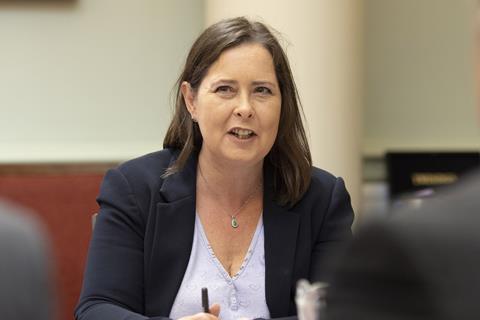













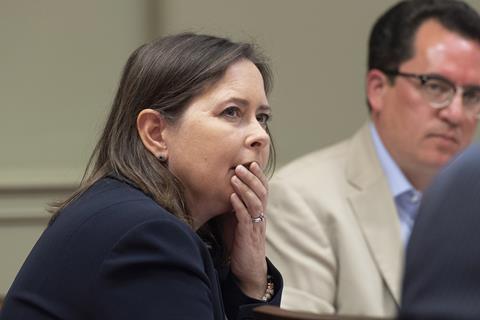


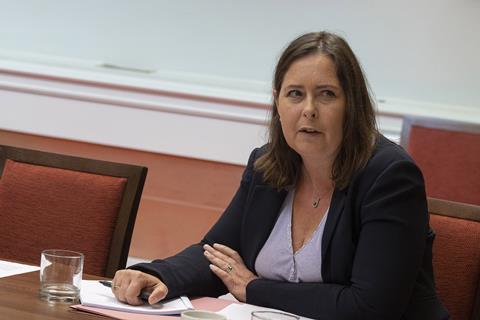










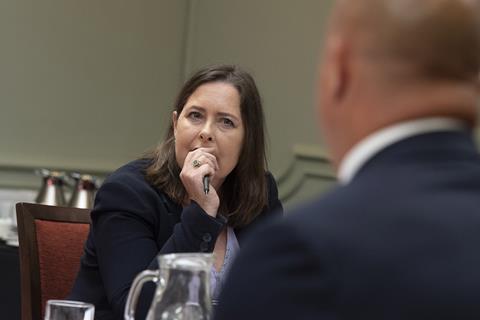








4 Readers' comments